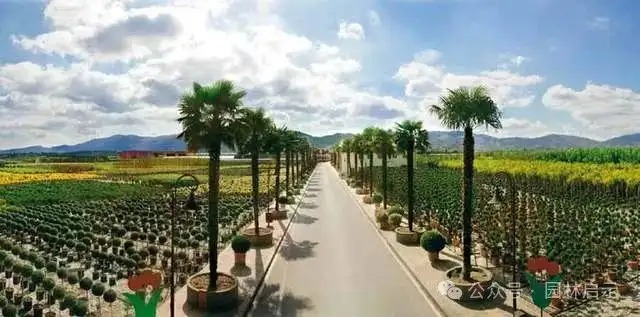As a nursery, we need to understand the knowledge of garden design and planting: only in this way can we achieve sustainable development
Introduction:
This article elaborates on the five main ways of plant arrangement in garden projects: solitary planting, paired planting, row planting, clump planting and group planting.
Each method has its own unique artistic effect and configuration requirements. Through clever combination and matching, it can create a beautiful and harmonious garden landscape, adding color and vitality to people's lives.
For production nurseries, understanding the configuration of garden plants is of great help to seedling production and cultivation. It is recommended that seedling people read the article patiently.
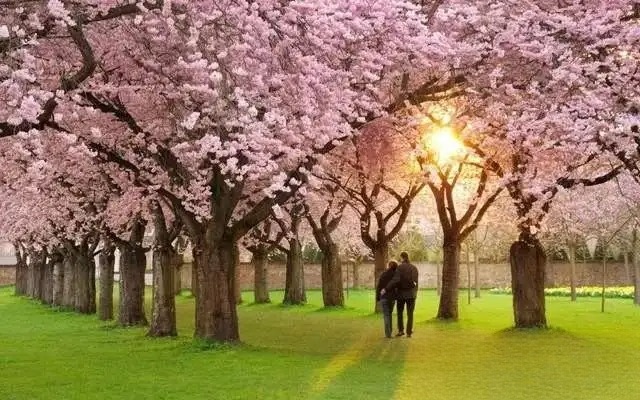
1. Solitary Planting: Unique Landscape in the Garden
In garden projects, solitary planting is a unique way of arranging plants, mainly used to highlight the individual beauty of trees.
Solitary trees are often used as the main landscape of a garden space, attracting visitors' attention with their unique posture, color and size.
For solitary trees, there are strict selection criteria in garden design.
First, the tree posture should be graceful, showing the natural beauty of the tree;
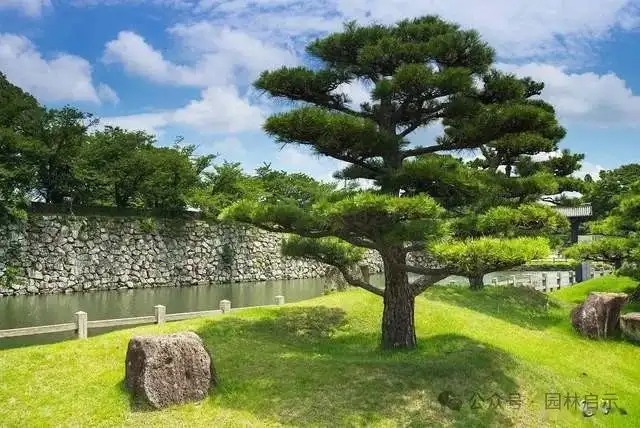
Secondly, the color should be bright, which can contrast with the surrounding environment and enhance the visual effect;
Furthermore, the plant should be slightly larger in size so that it can stand out in the garden and become the visual focus;
Finally, the tree must be long-lived and distinctive so that it can continue to display its solitary charm.
When placing a solitary tree, the impact of other trees around it needs to be considered. To maintain a suitable viewing distance, a certain amount of space is usually left around the solitary tree to prevent other trees from blocking the view.
Especially around precious ancient trees, we need to be more cautious and not plant other trees and shrubs to avoid destroying their unique charm.

In addition, for solitary trees used for shade, we also need to pay special attention to the shape and size of their crowns.
An ideal shade tree should have a broad crown, dense branches and leaves, and large leaves to provide adequate shade for visitors.
At the same time, in order to reduce the occurrence of diseases and pests, we should choose tree species with fewer diseases and pests, and spherical or umbrella-shaped crowns are preferred.
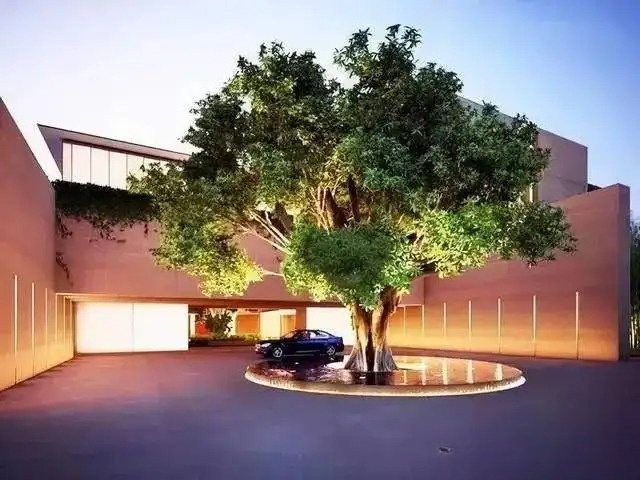
2. Paired Planting: The Beauty of Symmetry in Gardens
Paired planting is another common way of arranging plants in garden projects, which emphasizes the symmetrical beauty of trees.
Paired planting is often used on both sides of garden gates, building entrances, squares or bridge heads. Through symmetrical layout, it creates a harmonious and stable visual effect.
In the arrangement of planting, we do not require absolute symmetry of trees, but rather seek a balance in form.
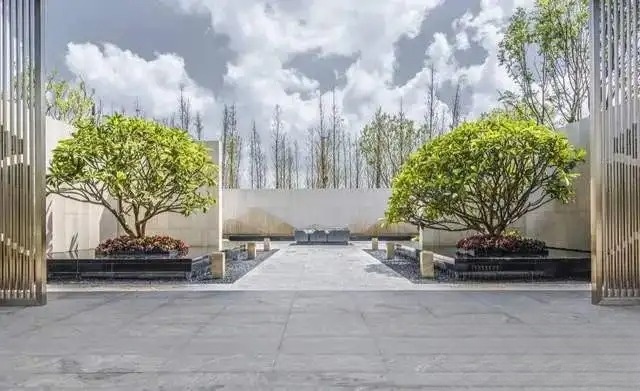
This balance can be a balance in quantity, form, color, etc. Through clever configuration, the trees planted can achieve a harmonious and unified visual effect.
At the same time, the selection of trees for planting also needs to consider their growth habits and ornamental value. We should choose those tree species that grow quickly, have full crowns and beautiful shapes to ensure that the planting effect can be achieved.
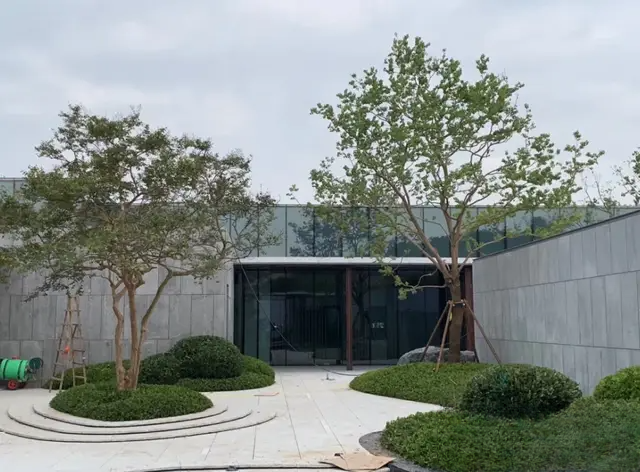
3. Row planting: uniform garden style
Row planting, also known as strip planting, is a way of planting trees in rows and strips in garden projects.
This method is often used on both sides of streets and roads, or around regular squares. Through neat arrangement, it forms a regular and orderly garden style.
In the row planting configuration, we need to pay special attention to the spacing and arrangement of trees.
Spacing that is too large or too small will affect the overall aesthetics, and the choice of arrangement should be determined based on site conditions and design requirements.
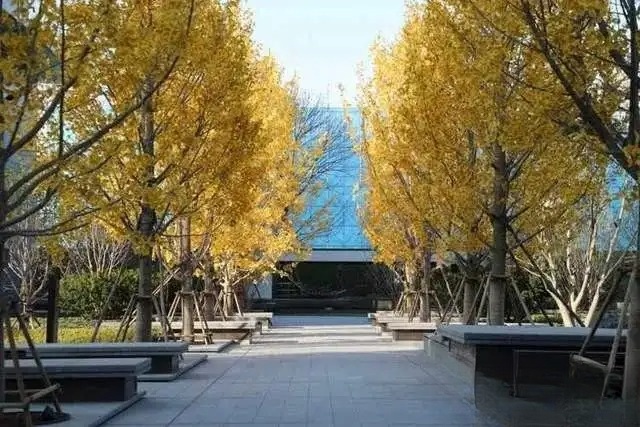
In addition, in order to create a better visual effect, we can also arrange some flowers or ground cover plants between or around the trees to increase the richness of colors and layering.
When row planting is used as a background or isolation measure for garden scenery, it is generally advisable to adopt a dense planting method to form a green barrier. This can not only enhance the sense of hierarchy of the space, but also play an environmental protection role such as sound insulation and dust prevention.
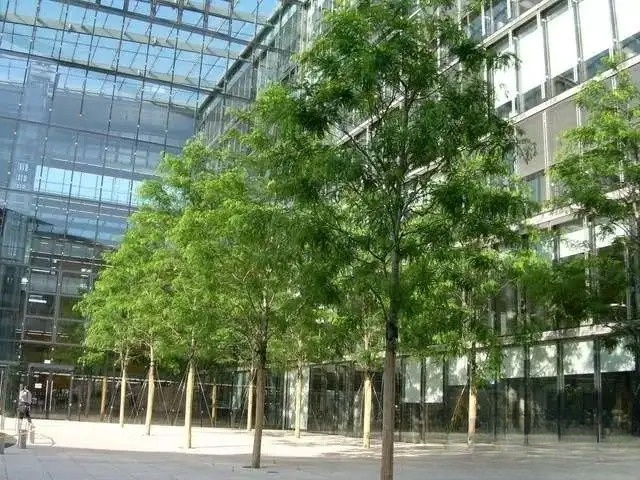
4. Cluster planting: the perfect combination of nature and art
Cluster planting is a common way of plant arrangement in garden projects, which emphasizes the combination and matching of different tree species.
Through cluster planting, we can blend multiple trees together to form a natural and harmonious garden landscape.
In the configuration of cluster planting, special attention should be paid to the selection and matching of tree species.
Different tree species have different shapes, colors, habits, etc., so we need to choose appropriate tree species according to design requirements and site conditions.
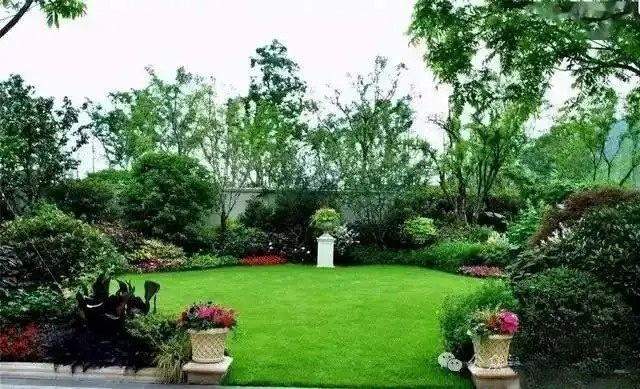
At the same time, we should also follow the rules of artistic composition so that the overall effect of cluster planting can show both the group beauty of plants and the individual beauty of each tree species.
In addition, the configuration of cluster planting also needs to consider the sense of space and layering.
Through reasonable layout and configuration, the cluster planting can form a certain depth and breadth in the space, increasing the three-dimensional sense and layering of the garden.
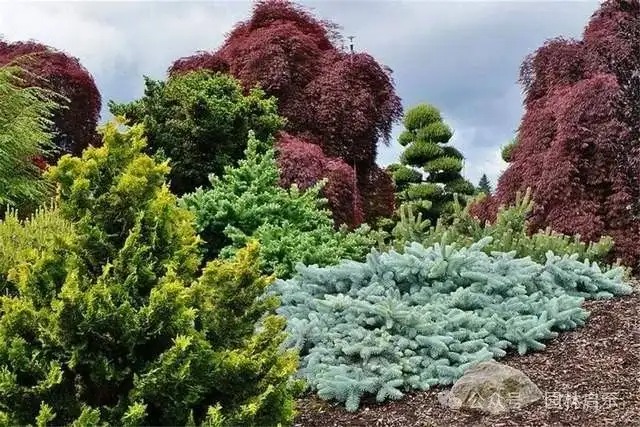
5. Group planting: the fun of forests and the beauty of groups
Group planting is an important way to show the beauty of tree groups in garden projects.
It mainly creates a visual impact by combining groups of the same tree species with the advantage of quantity, creating a "forest" interest.
In the configuration of group planting, we need to pay attention to the unity and coordination of tree species.
By selecting tree species with similar shapes, colors and habits for group planting, a harmonious and unified visual effect can be created.
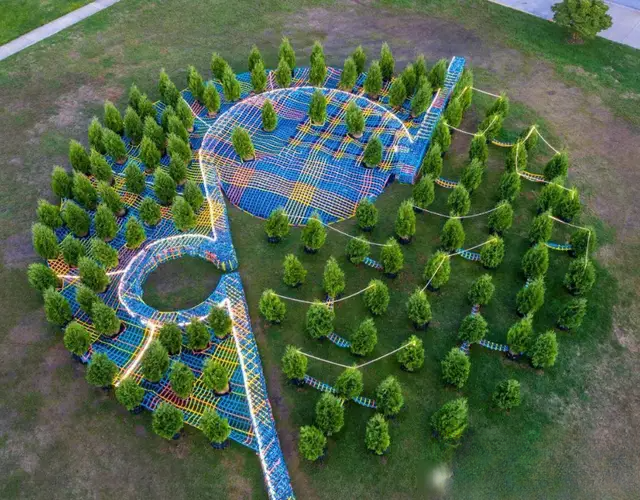
At the same time, we should also determine the scale and layout of the planting group according to the size and shape of the site to ensure the coordination and beauty of the overall effect.
In addition, the configuration of group plantings must also take into account integration with the surrounding environment.
Through reasonable layout and configuration, we can make the planting group form an organic combination with the surrounding buildings, water bodies, terrain and other elements, and jointly build a beautiful and harmonious garden space.
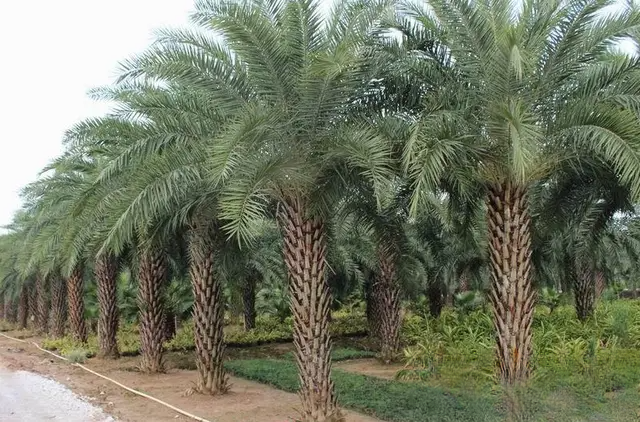
Production Nurseries Understand the Importance of Garden Design
To sum up, single planting, paired planting, row planting, clump planting and group planting are common plant configuration methods in garden projects.
They each have unique characteristics and requirements. Through clever use and matching, we can create rich, diverse, beautiful and harmonious garden landscapes.
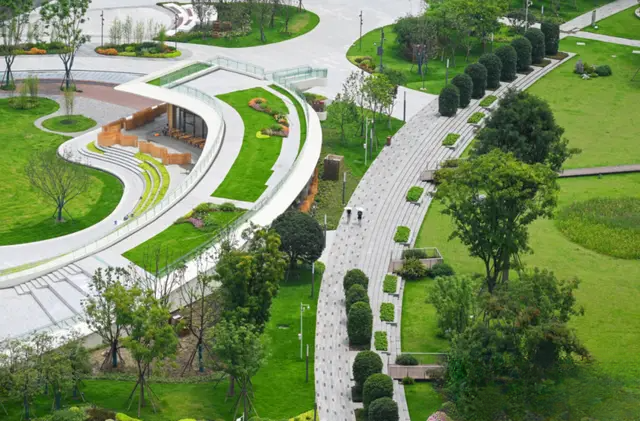
By understanding the characteristics and configuration methods of various garden plants, they can help them better produce and cultivate seedlings, and can produce seedlings that meet design needs in a targeted manner based on the specific needs and requirements of the garden project.
Only with a full understanding of the configuration of garden plants can the nursery really do a good job in the production and cultivation of seedlings and provide high-quality seedlings that meet the needs of garden projects.
Only in this way can the nursery become stronger and bigger and achieve sustainable development.
